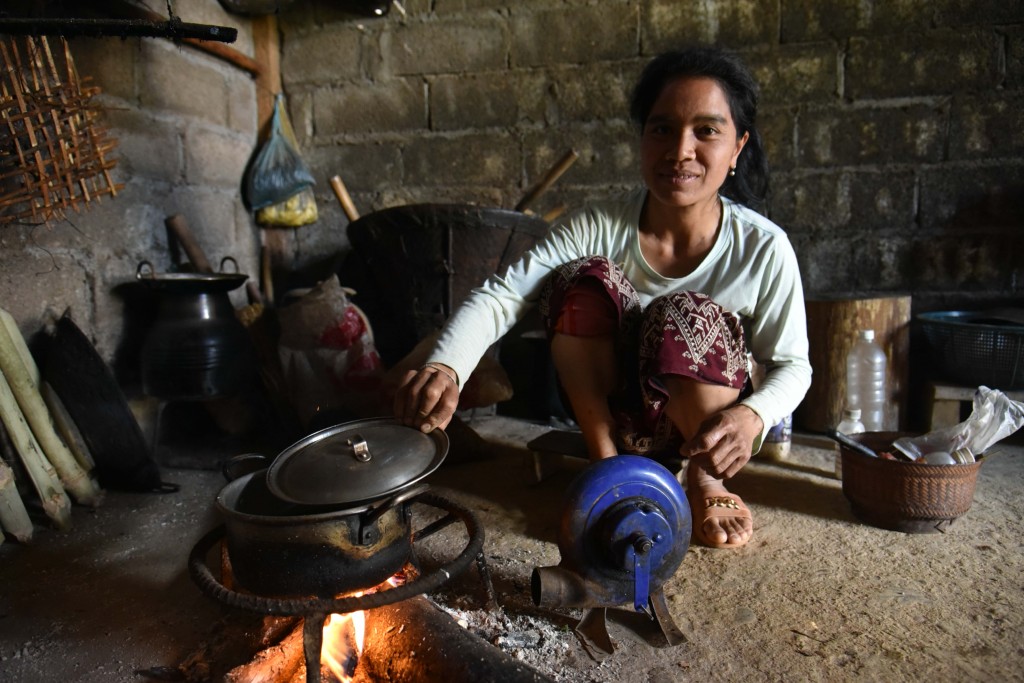Ms. Sapiew is a 31-year-old farmer in Huay Phod Village, Khoua District, Phongsaly. Her family is made up of six people – herself, her husband, and their four children, one of which is a girl. Before the arrival of the Khoua Food Security Project, Ms. Sapiew had a lot of difficulty with getting water access in her household. Her children’s clothes need to be washed several times a week, so any water she was able to bring home had to be conserved. When washing the dishes, most of the water used was rainwater or collected from water vapor made from steam when cooking. Every day she had to go to the farm to work from morning to evening. After returning from working all day in the fields, she then had to get water by foot, about one hour from her house. By the time she arrived back home, it was already evening. Some days when she came back from the field, she was not able take a shower because there was no water left for personal use. When Ms. Sapiew asked her husband to get water, he couldn’t because he had to find food for the family, so she would have to take her 8-year-old son to help her. Ms. Sapiew found this tiring. She felt exhausted and frustrated with daily life.

“I have a lot of difficulty in getting food from nature because I have to go far to get it,” she says. “Some days I don’t find anything, so we don’t have anything to eat to that day. On days like that, my whole family drinks diamond fruit juice to survive.”
After the completion of the construction of the water system, it was found that the water provided for the use of the people is sufficient. The Food Security project, in collaboration with the Agriculture and Forestry Office and village administration, had a discussion to find an area and allocate a suitable plot of land to grow vegetables and distribute it to the people to grow vegetables. The project also provided technical training, leads on study tours, vegetable varieties, and the equipment and tools necessary to grow vegetables in greenhouses for the people in the area.

“I’m very happy that the project encouraged me to grow a vegetable garden,” says Ms. Ya. “Since I started growing it, I’m not walking too far to get food – so I now have more time to work and participate in other activities.”
Since growing vegetables in a greenhouse is a new concept for the villagers, many are unwilling or cautious to give it a try because of the time, skills, and effort required to build it. But Ms. Ya decided to apply herself to studying the process and participated in the implementation of the activity. Learning from the staff and tending to her garden eventually led Ms. Ya to have enough vegetables for her household and reduce the household expenses. “Most importantly, I don’t have to pay for vegetables anymore. I even have vegetables left over that I can sell to my relatives and or other people who want to buy vegetables too,” she continues.

Ms. Ya and her family can now plan for a future and have a sense of security. “My husband and I will continue to expand the vegetable growing area to a large number, increase our vegetable varieties, grow organic quality vegetables, to have enough to eat throughout the year, and to be able to generate income to make my family’s life better.”

